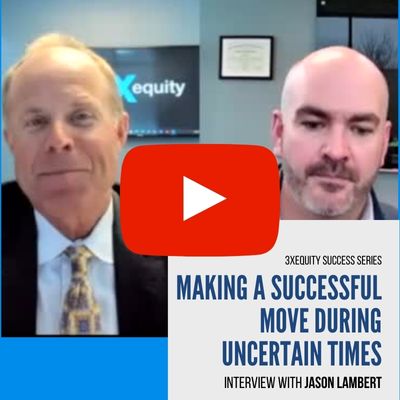
With the growing number of financial advisors moving closer to retirement age, succession planning has been a hot topic of discussion for the last couple of years.
To ensure a smooth transition of the practice from the retiring financial advisor to the acquiring financial advisor, a well-written document and tested succession plan needs to be in place. In this article we present an overview of the succession planning process to highlight the important elements. The process of succession planning needs to be customized to the individual situation of each financial advisor, and hence this article only aims at providing a bird’s eye view of the process and highlighting some of the areas that may require expert intervention.
Why a succession plan: The need for succession planning is driven by not just the aging population, but also the quantum of assets that is managed by these planners. Cerulli notes that in 2014 the RIA channels comprised more than 15,800 firms that managed close to $2.4 trillion in assets.
Having a retirement and transition plan in place can also be viewed as a fiduciary responsibility of the financial advisors to look out for their clients’ best interests at the time of the financial advisor’s retirement. Having a succession plan in place improves the credibility of the financial advisor in the eyes of the clients, as it shows a tangible and actionable document that helps ensure that their assets will be efficiently managed even after their financial advisor’s retirement.
Defining personal and business goals: The first step in the process of succession planning is to be able to ask yourself the difficult questions that help you define what your personal goals are at the time of retirement and when you want to retire. Your personal and business goals help you to decide on the appropriate form of succession for your practice: internal succession, mergers, or outright sale. For example, if you would prefer to slowly transition your practice or stagger the transition to your successor, an internal succession or partial sale may be your preferred form of succession.
Identifying the timelines for succession: Based on your personal and business goals, you are in a better position to narrow down the timelines for the actual succession, and then work backwards on the various steps in the succession process. This would also be the point at which you can identify trigger events, such as an incapacitating illness, that could cause the early adoption of the succession plan. For example, if you have been given the opportunity to move your family to Paris at the end of the year, you have much less time to work with, and so an outright sale may be your best succession plan.
Getting outside input: If you struggle to define your personal and business goals, or your retirement timeline, you may want to consider discussing your thoughts with your spouse or partner, hiring a life coach, talking with a retired financial advisor you know, or even talking to any promising employees or junior advisors you could pass the business on to.
Deciding on the form of succession: Your personal goals, together with the available time horizon to retirement, will guide you in deciding on the best form of succession for your unique circumstances and 3xEquity provides access to Instant Offer & Buyers Network services which may help you in this process as well. The forms of succession that are increasingly in use include internal succession through sale to existing employees or family, partial sale of the practice, mergers, and outright sale of the business.
Understanding the valuation methodology: The valuation of your practice is a significant element of the succession process as it defines the value that you have created as a financial advisor. Often, recurring revenues are viewed as an important predictor of the value of the firm, but other variables, such as client profiles, financial advisor dependencies, and channels of referrals, also impact the firm’s value. When it comes time to determine the valuation of your practice, you should look for expert input. Companies such as 3xEquity provide practice value optimizer tools and customized valuation reports that help advisors make informed decisions. Getting a valuation is also helpful in identifying the levers of growth for your practice and opportunities to improve your valuation before the time of sale/transfer by identifying the weaknesses and providing advice to take remedial actions.
Undertaking deal structuring and identifying the financing options: The deal structuring for a succession plan will be based on the form of succession desired by the financial advisor. This is also an area where expert advice is of value. 3xEquity also provides access to a deal terms tool that allows advisors to compare equity, customized, or cash flow deals. These terms are not only relevant for external sale, but also for internal succession. Identifying and agreeing on the financing option for the transfer of interest is especially relevant for internal succession where the availability of funds at the time of succession could be an issue.
Developing a transition plan for both the clients and employees of the practice: The value of the practice is based on the revenue generated from clients, and hence the transition of clients is an integral part of the process. Often clients tend to have greater faith in certain employees of the practice and retaining such employees at the time of succession will be critical. The succession plan should incorporate the details of employee transition and retention. Such transition plans should not only be documented, but also effectively communicated both to employees and clients.
The benefits of thinking and planning ahead for retirement is a message that financial advisors convey very effectively to their clients. However, like most individuals, the thought of retirement can be intimidating for financial advisors as well. A succession plan should be viewed not as an end-state for the financial advisory practice, but as a transition plan towards the next phase in a financial advisor’s life. While moving on to this next phase, it is the fiduciary duty of the financial advisor to ensure that the assets of the clients are being managed in the client’s best interest after the financial advisor’s exit from the practice. Having a succession plan is a win-win situation for both financial advisors and their clients. On the one hand, the financial advisor can leverage growth drivers to maximize value at the time of retirement. On the other, the clients are assured of continued quality management of their assets.




